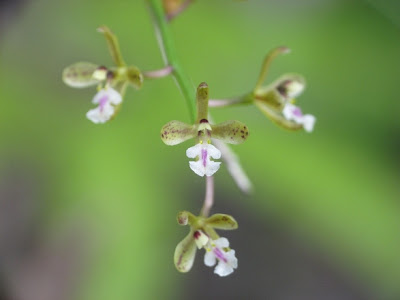Bako is located at in the state of Sarawak on the third largest island, Borneo. Established in 1957, it is Sarawak's oldest national park and the 2nd oldest in Malaysia. I was fortunate to be able to go there for a recee trip with LK and RY.

The mangrove here is very different from Singapore. In Bako, you can clearly see the zonations demarcated by mangrove trees while Singapore's mangrove zones were not clear due to the lack of area. In the day, due to the sparse arrangement of the trees, we were able to spot many birds easily. Below is a velvet-fronted nuthatch, Sitta frontalis, an uncommon resident here.

On the mudflats, fiddler crabs were out feeding and courting. This is my first time seeing an electric blue fiddler!

Many people are drawn to Bako due to the ease whereby the endemic primate of Borneo, the proboscis monkey (Nasalis larvatus) can be ease in close vicinity. We were very fortunate to see them everyday at long range but on our last morning there they were hanging very close to the mangrove boardwalk feeding on the leaves of Sonneratia.

The malay name of the proboscis monkey, orang belanda came about during the colonial days whereby the locals felt that the Dutch had a similar big red nose.
 The adult males have a large long nose and a characteristic pot belly. It looked just like an old man with a bulging stomach!
The adult males have a large long nose and a characteristic pot belly. It looked just like an old man with a bulging stomach!
Long-tailed macaques (Macaca fascicularis) are also found in this park. They stalked about the mangrove floor searching for food like crabs to eat on, hence the crab eating monkey.

But of course, they were still a nuisance at times, stealing tourists' food whenever they had the chance. This is due to visitors who feed them frequently, causing them to be least afraid of humans.








 Flower bud of Rafflesia tuan-mudae at Gading
Flower bud of Rafflesia tuan-mudae at Gading Immature flower of Titan arum
Immature flower of Titan arum Fruits of Titan arum
Fruits of Titan arum Talipot Plam (source: www.panamatours.com)
Talipot Plam (source: www.panamatours.com)